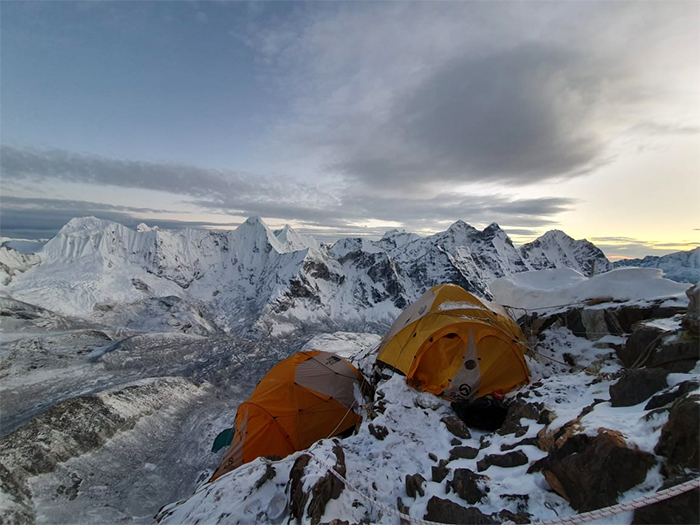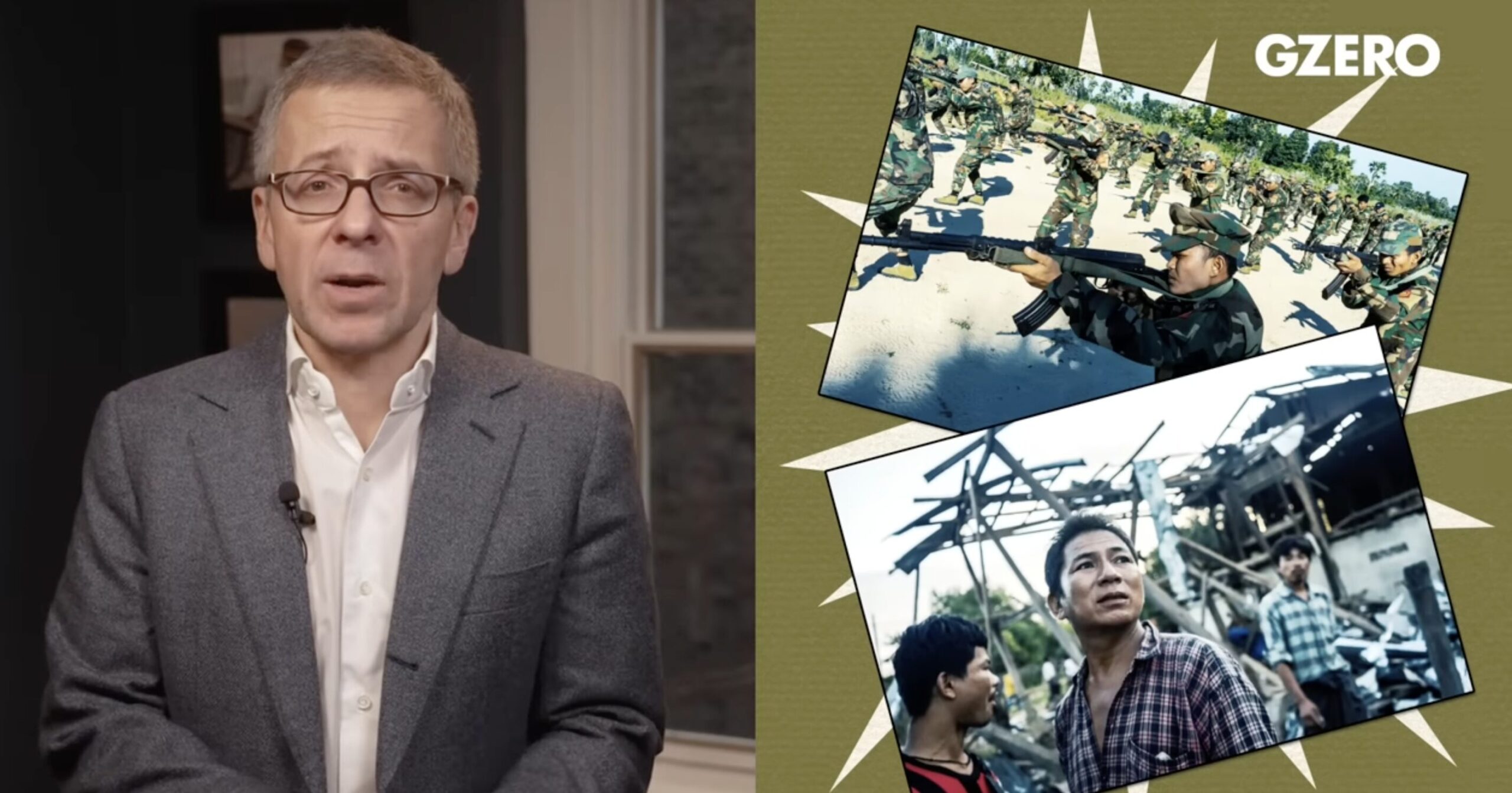
Peter Zeihan: Europe Goes Nuclear
We’ve got two major developments in Eurasia. We’re talking about Ukraine disabling two ships in the Caspian Sea and Poland getting EU approval to build…
Thought Leader: Peter Zeihan

In mountaineering we approach team building in similar ways we approach it in business.
I’d like to discuss three main rules for team building: have the most skilled team members, get the biggest egos on your team, and choose a leader right away.
We want the strongest and the most skilled people on the team.
Similar to any business situation, we want to make sure that each team member possesses the necessary knowledge, abilities, and the experience to effectively contribute to the team’s goal of reaching the summit.
The skillset has to be relevant to the mountain we are climbing because every mountain has its own trail composition, because choosing a wrong person to be on the rope with might mean a very bad situation if worst comes to worst. If the team member does not walk properly on crampons, she might send a rock down into your head and have you injured or worse. If she is not fast enough on the ice wall, everyone below gets cold waiting as there is usually no way to pass.
We want the biggest egos on the team (perhaps, it applies to any team sport).
Expedition is a very expensive, time consuming, mentally challenging process. Definitely not a walk in the park. We want to make sure that all Type A personalities on the team are there working towards the same goal – to summit and return safely to the Base Camp.
It is believed that having a team member with a big ego can be challenging for a team leader, as it may cause friction among team members and make it difficult for the team to work together effectively. Team members with big egos are overly confident in their own abilities and ideas and they have a tendency to dominate conversations and decision-making. But all of these features taken in the context of the uncertainty and a risky environment are actually excellent news.
There is no democracy on the team.
Even with all those type A personalities and big egos, we always have a leader. The leader is decided on before the expedition and that leader always has the last word.
When we are up high on the mountain, in extreme conditions, tired, cold and stressed… and if the leader for some reason decides to turn around, we all turn around, no questions asked. There will be questions and discussions at the Base Camp upon our return, but never-ever on the mountain in extreme conditions when everything is on the line.
In a team setting, democratic decision making allows for a diversity of perspectives and ideas to be considered and it usually promotes a sense of ownership and buy-in among team members. However, if you have to operate under tight deadlines and the stakes are high, it is important to remember that democratic decision making can also have some disadvantages: it can be time-consuming and may lead to delays in decision making and it can be difficult to reach a consensus among team members with different opinions and perspectives. Groupthink is highly inappropriate in a high-risk environment, thus an opinion and a final word from a leader becomes of outmost importance.
Both in business and on the mountain, team leadership involves the ability to guide and motivate a group of individuals to work together towards a common goal, whether it is reaching the summit or successfully going through an IPO. In general, leaders’ responsibilities involve setting clear expectations, communicating effectively, and creating a positive team culture.
A successful team leader should also have strong problem-solving skills, be willing to take responsibility for major decisions, and have the ability to build trust and foster collaboration among team members. Additionally, a good leader should be able to adapt to the changing needs of the team and be able to navigate conflicts that may arise.
One last point worth mentioning is rather controversial. There is no “We” on the team, there is only “I”.
Let’s take a climbing team as an example. Whenever you go above 8,000 meters into a so-called “death zone”, you cannot and should not expect any help and you always have to stay self-sufficient. No matter how strong your team members are, you always have to be in a position to help yourself. Moreover, if you decide to help a weaker climber on the mountain, you have to be helping from a position of strength. Otherwise, we might end up with two dead bodies on the mountain instead of one. It is a simple oxy mask rule: you put the oxygen mask on yourself first in order to feel strong enough to help another person in distress.
Humans are inherently selfish; this is how nature made us. When we are on a ‘team mission’, be it working on a business project or climbing a mountain together, the mission is artificially imposed on people. We are on that team for our own selfish reasons, serving our individual needs and goals.
Staying selfish might actually save your life and the lives of others on the mountain. As team members are mostly concerned primarily with their own interests and desires, rather than those of others, it assures that they will not be a search and rescue problem and will be able to take care of themselves, while not harming others.
Of course, selfish behavior can be detrimental to both the individual and the people around them. It can lead to conflicts and strained relationships, both in personal and professional settings, and can undermine the ability to work together effectively in a team.
Selfish behavior can create tension and conflict within the team, and can lead to resentment and mistrust among team members. It can also undermine the team’s ability to work together effectively and achieve its goals.
It is a delicate balance for a team manager to work with. If she doesn’t recognize the selfish goals of each team member, she might end up having team motivational issues down the road and will have to deal with people quitting the project. On the other hand, the selfish behavior might become “too selfish” and harm the entire team.
Being aware of the impact of one’s actions on others, and being willing to make sacrifices for the good of the group, can help to build stronger, more cohesive and productive teams.
It’s important for a team leader to address selfish behavior when it occurs, by setting clear expectations for teamwork and collaboration, and by providing feedback and coaching to team members who are behaving in a selfish manner while addressing their personal goals and inspirations. Encouraging open communication, active listening, and mutual respect among the team members can also help to mitigate the negative impact of a selfish team member.
Peter Zeihan: Europe Goes Nuclear
We’ve got two major developments in Eurasia. We’re talking about Ukraine disabling two ships in the Caspian Sea and Poland getting EU approval to build…
Thought Leader: Peter Zeihan
Dr. Sanjay Gupta’s Top Health Stories of 2025
From the resurgence of measles to a new way to treat pain, 2025 was a challenge for public health while still offering moments of hope. Sanjay…
Thought Leader: Sanjay Gupta
Ian Bremmer: The state of global conflict in 2025
On GZERO World, Ian Bremmer takes a hard look at the biggest global crises and conflicts that defined our world in 2025 with CNN’s Clarissa…
Thought Leader: Ian Bremmer

